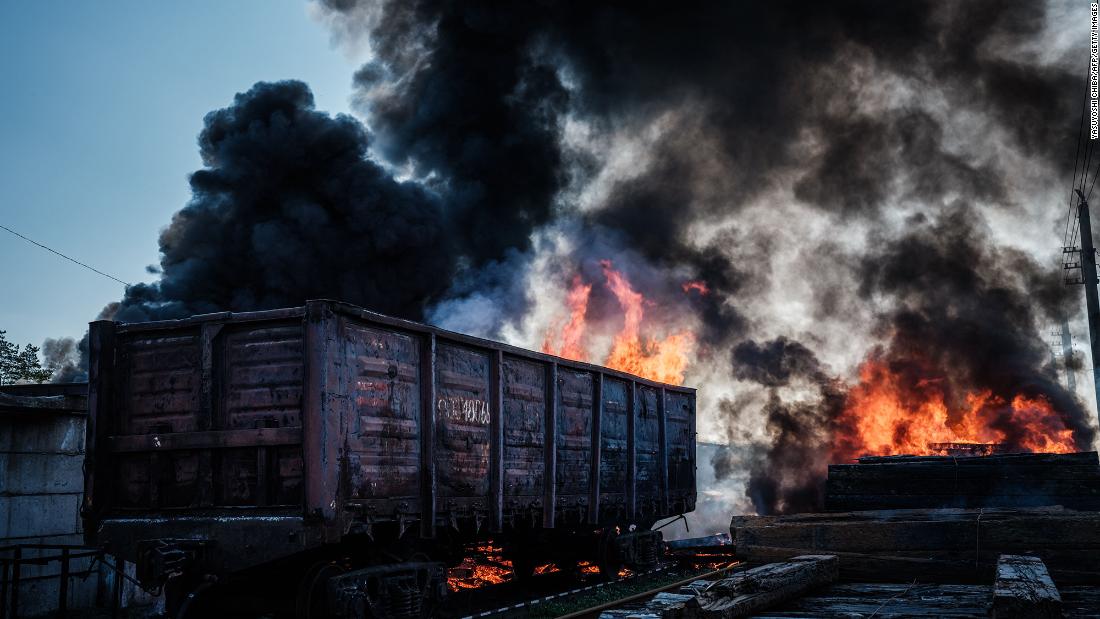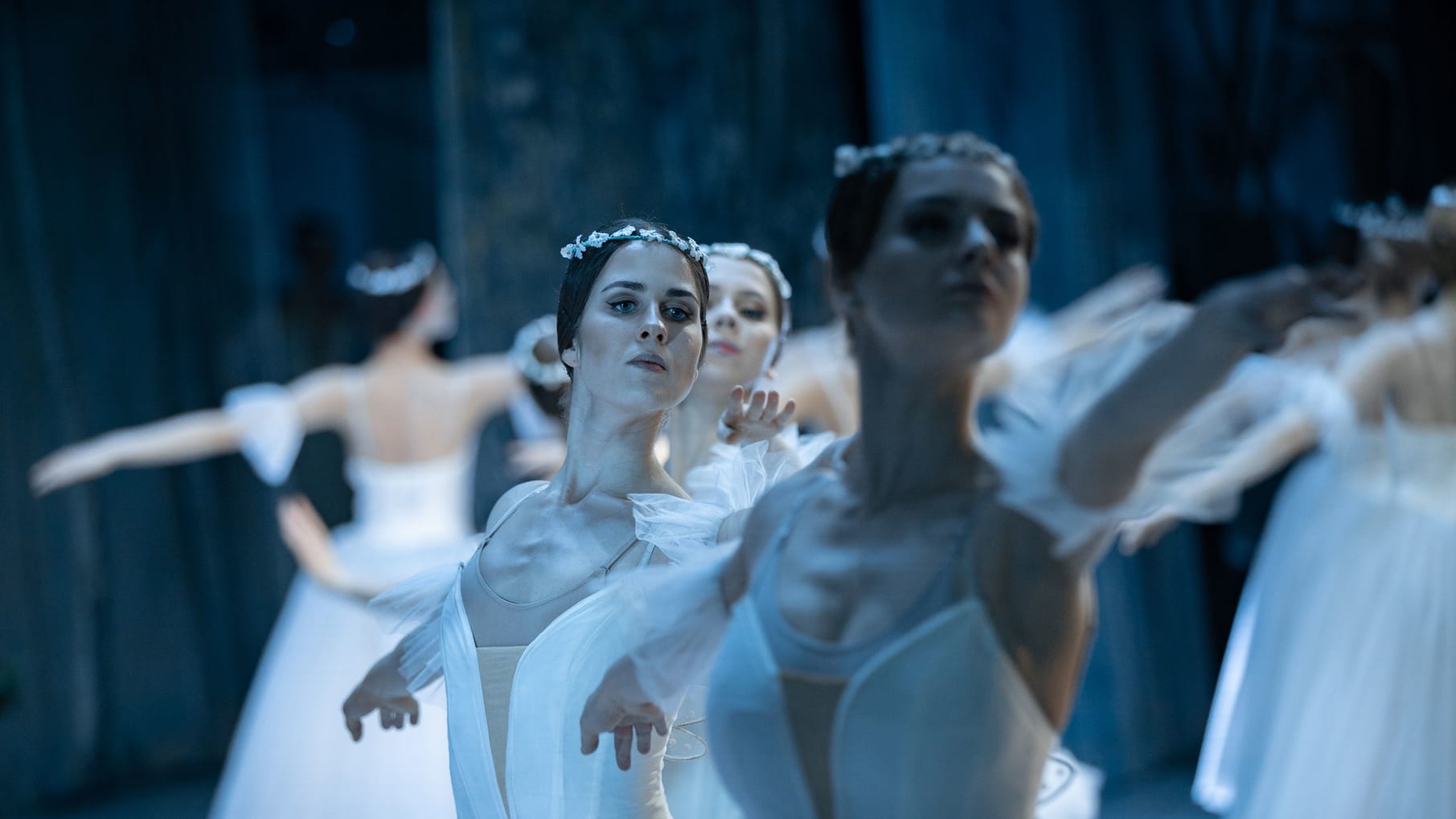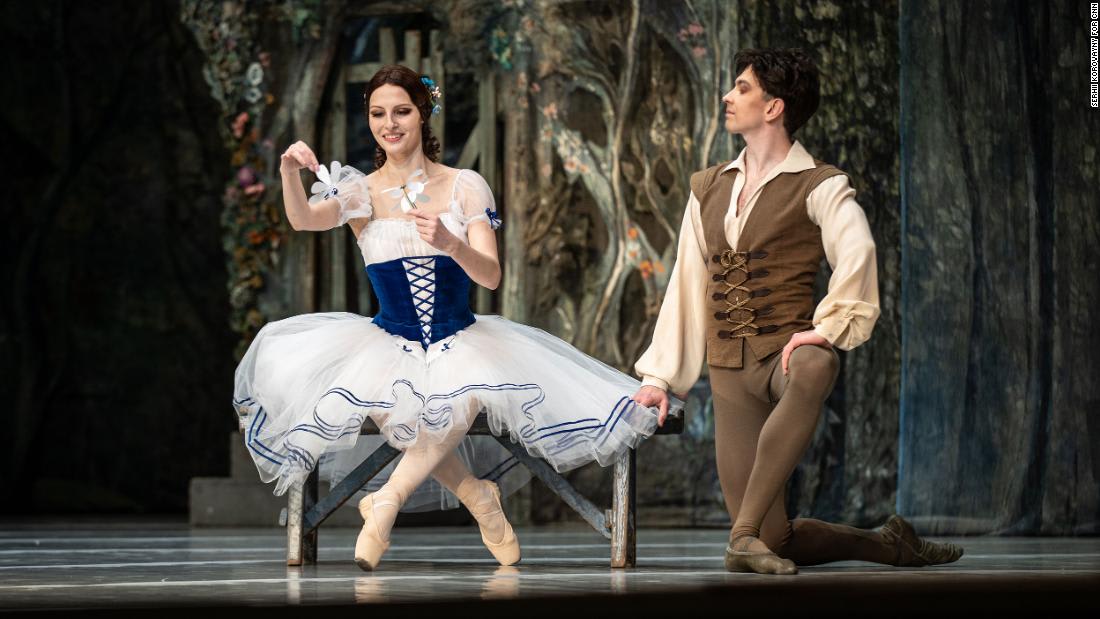

With the audience waiting eagerly in its seats, a familiar message echoes through the hall, reminding patrons to turn off phones and immerse themselves in the experience.
It’s immediately followed by a more abnormal announcement. “Dear guest, our event will be suspended in case of air raid alert. Dancers and spectators must go to the bomb shelter situated in the theater,” it tells the crowd — a poignant reminder that this is not a regular night at the theater.
Then the lights dim, the orchestra begins to play, and a dancer appears on stage from the wings.
On Friday, Lviv National Opera staged its first full production since the Russian invasion of Ukraine on February 24.
“One way or another, the war affects us all … We understand that light must defeat darkness, that life must defeat death, and the mission of the theater is to assert this,” the opera’s artistic director, Vasyl Vovkun, told CNN.
The Western Ukrainian city of Lviv has emerged almost entirely unscathed, despite devastating conflict elsewhere in the country.
With Lviv residents slowly learning to live with the war, Vovkun said providing a place of solace amid the raging conflict is the driving force behind resuming shows.
Vovkun opened with “Giselle,” a well-performed ballet classic that tells the story of a beautiful peasant girl who dies prematurely after being betrayed by the man she loves.
“Giselle also has all shades of joy and sadness, there is also death and there is also the victory of love. And in fact, this topic is consistent today. Even when we hear a lot about death, we still hope, both in this work and in life, that love will win, life will win,” Vovkun explained.
Despite the show’s sell-out popularity, many seats remain empty as the theater’s bomb shelter can only hold 300 people.
Daryna Kirik, the 21-year-old who plays the lead role of “Giselle,” has seen her life upended by the war and the horrors of Bucha, where mass graves were recently found.
“Dancing helps to distract from what’s happening … Most of my relatives are in Kyiv and Kyiv region now. My mom and my grandmother and her sister survived occupation in Bucha. My mother managed to evacuate herself and the pets. Now she is in safety in Poland restoring her nerves,” Kirik said.
The crowd is captivated with every leap, lift and arabesque. It is only a two-hour show, yet for a time the audience is transported away from the chaos of reality.
“After you visit this place, you understand that life can’t be defeated. Our life can’t be bombed, or destroyed by missiles or chemical or nuclear weapons,” says Victoria Palamarchuk, a 50-year-old journalist, currently staying with extended family in Lviv after leaving her home in the central Zhytomyr region.
With a warm smile, she adds: “Life can’t be defeated while such places exist — theaters, opera, and ballet theaters — while people are coming here and feel joy with these sounds.”
Read the full story here:
